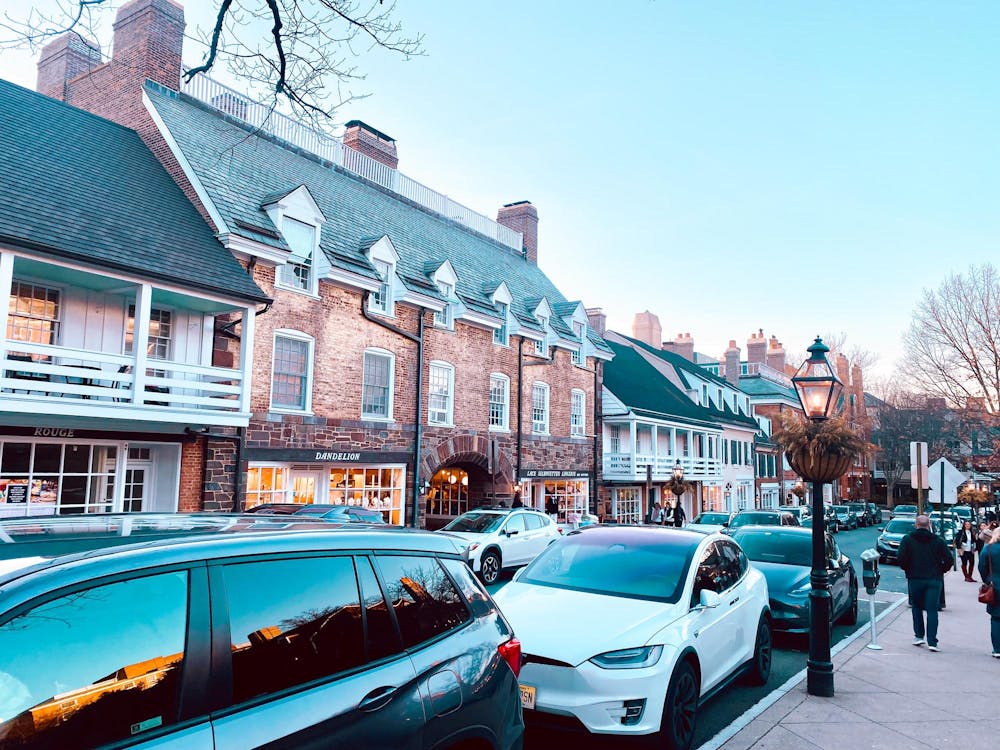There has been a recent uptick in gun control advocacy on campus, including a recent spate of opinion pieces, in The Daily Princetonian, such as my own. These articles make it clear that there is significant support for “common sense” gun control on campus. Despite their merits, I am concerned that these pieces stop short of advocating for what is needed to combat gun violence. Specifically, Aaron Tobert GS argues that “it's time to end the gun insanity.” But his traditional “common sense gun reform” goals are inadequate — more must be done to get politicians in office to stand up to the NRA and support comprehensive (i.e. total) gun control. Common sense gun control is not enough to end or substantially reduce gun violence; gun violence is endemic and multifaceted, and, therefore, the issue cannot be solely combated with the superficial, common-sense reforms.
While there are other definitions for “common sense” reform, this article focuses primarily on Tobert’s definition of “common sense” — background checks, higher age limits, and assault rifle bans. Such a definition is well in-line with historical reforms under this heading. It should go without saying that I support these reforms, and it’s clear that most Americans already do support “common sense” gun control. Newsweek reports that support for background checks, higher age limits, and assault-rifle bans have reached 96 percent, 78 percent, and 62 percent, respectively.
This should come as little shock. For example, many people can get behind the ideas that the mentally ill or criminals ought not to get their hands on guns. Consider a 2017 Pew Research Center Report putting support for background checks at gun shows and preventing mentally ill from having guns at 84 percent and 89 percent, respectively. Moreover, it seems reasonable to suggest that minors shouldn’t have access to firearms. Even the most rabid Second Amendment toting hunt-master and the most liberal sunflower peace child can get together and agree on these issues.
The problem with “common sense” gun reform as presented has nothing to do with values or beliefs and everything to do with the pure mechanisms of politics — the NRA has money and votes and will defend gun ownership to the last. That’s its job. If you want “common sense” gun control, you need to donate and vote. That’s it. There’s no arguments to be made, simply opposition to overcome.
The focus on “common sense” gun control misses the mark in regards to the nature of gun violence. It's about more than school shootings. It’s also about homicide, racism, suicide, and trafficking. As I argued in my article two weeks ago on repealing the Second Amendment, the goal of gun control reform should be nothing less than zero gun deaths. The total death toll in the United States from gun violence between 1968 and 2011 reaches 1.4 million — 200,000 more American deaths than in all wars the United states has fought in its entire history. This number takes into account the casualties of the Civil War, which consisted solely of Americans killing other Americans.
Guns take far more lives than in just mass shootings. Homicides drive a significant share of deaths from gun violence. The CDC reports that in 2015 alone, 13,000 Americans were killed in gun related homicides. Compare this to total deaths in mass shootings from 2013 to the present, as reported by the Guardian: 1,875. Hence, while we lose an average of 375 people a year to mass shootings, we lost 3,466 percent more in 2015. While school shootings are undeniably tragic and pathos-inducing, reason compels us to understand that such shootings are a tiny fraction of an otherwise massive phenomenon. More than that, we ought to acknowledge gun deaths before we are confronted by the presence of dead school children. Why were we waiting for this to be our wake up call?
Common sense gun reform isn’t enough to stop the many deaths from day-to-day homicide. Just think: can we reasonably expect that assault rifle bans will prevent pistol shootings? Will raising the gun owning age to 21 prevent a 40-year-old man from losing control and shooting up a church? Doubtful.
There are so many horrors beyond school shootings that call for more than common sense reform.
First, gun violence and homicides have a disproportionate effect on minorities and the African-American population. As an article in The Conversation notes, “There’s justified, universal outrage at a shooting in a largely white, affluent area, but not so much at the frequent shooting deaths of black Americans.” America tends to treat the school shooting problem as distinct from general violence, which tends to ignore the more general and diffuse effects of guns on African Americans in particular. Moreover, common sense gun control is mostly targeted towards alleviating the problem of shootings, not the problem of such general gun violence. As an article in the Washington Post demonstrates, African Americans are far more supportive of gun control measures and especially gun control beyond “common sense,” showing the acute fear and reaction of these communities against gun violence.
Furthermore, our gun violence problem spurs greater gun violence abroad as well, most pressingly in Mexico. As Sarah Kinosian and Eugenio Weigend write in the LA Times, Mexican gun laws are very strict, yet cartels have no trouble obtaining cheap and effective American firearms from across the border, leading to increased cartel violence and the destabilization of Mexico. Mere moderate and superficial restrictions in the United States still leaves open the possibilities of American weapons making it into the hands of Mexican gangs and militia. Again, the focus on school shootings seems woefully insufficient compared to the broader effects of guns on our international neighbors.
Finally, there is the seldom-mentioned issue of suicide. According to the 2016 Brady Center & Campaign to Prevent Gun Violence Report on Gun Suicide, 20,000 people commit suicide in the United States per year using a gun. The CDC reports 22,000 such suicides in 2015. More than even depression, the mere presence of a gun at home increases chance of suicide threefold. Note the implications of this: any purchase of a gun is a suicide risk. No matter how safe we think that person is, no matter the background checks we provide, the waiting times we install, the assault rifle bans and so on, a gun in the house is a severe suicide risk. Accordingly, in suicide prevention, “common sense” is hardly sensical or sufficient.
If I have not yet painted a picture of the drastic steps needed to deal with gun violence, please note that I have not even covered various other costs of gun violence, such as psychological trauma to survivors, the many people who are shot and injured but survive, and the economic cost of gun violence. Some argue that we should simply strive for reduction. But why? And for what purpose? What do guns give us to justify so much death, so many injuries, so much damage? As I argued before, gun control policy must be comprehensive — strict regulation, mandatory buybacks, prominent oversight — for gun violence to ever begin to approach the acceptable level: none. And by this metric, “common sense” gun reform is not enough.

Ryan Born is a philosophy concentrator from Washington Twp., Mich. He can be reached at rcborn@princeton.edu.
This is part of a recurring weekly column on politics and pedagogy at Princeton and abroad. For hyperlinks, please see the online article.








